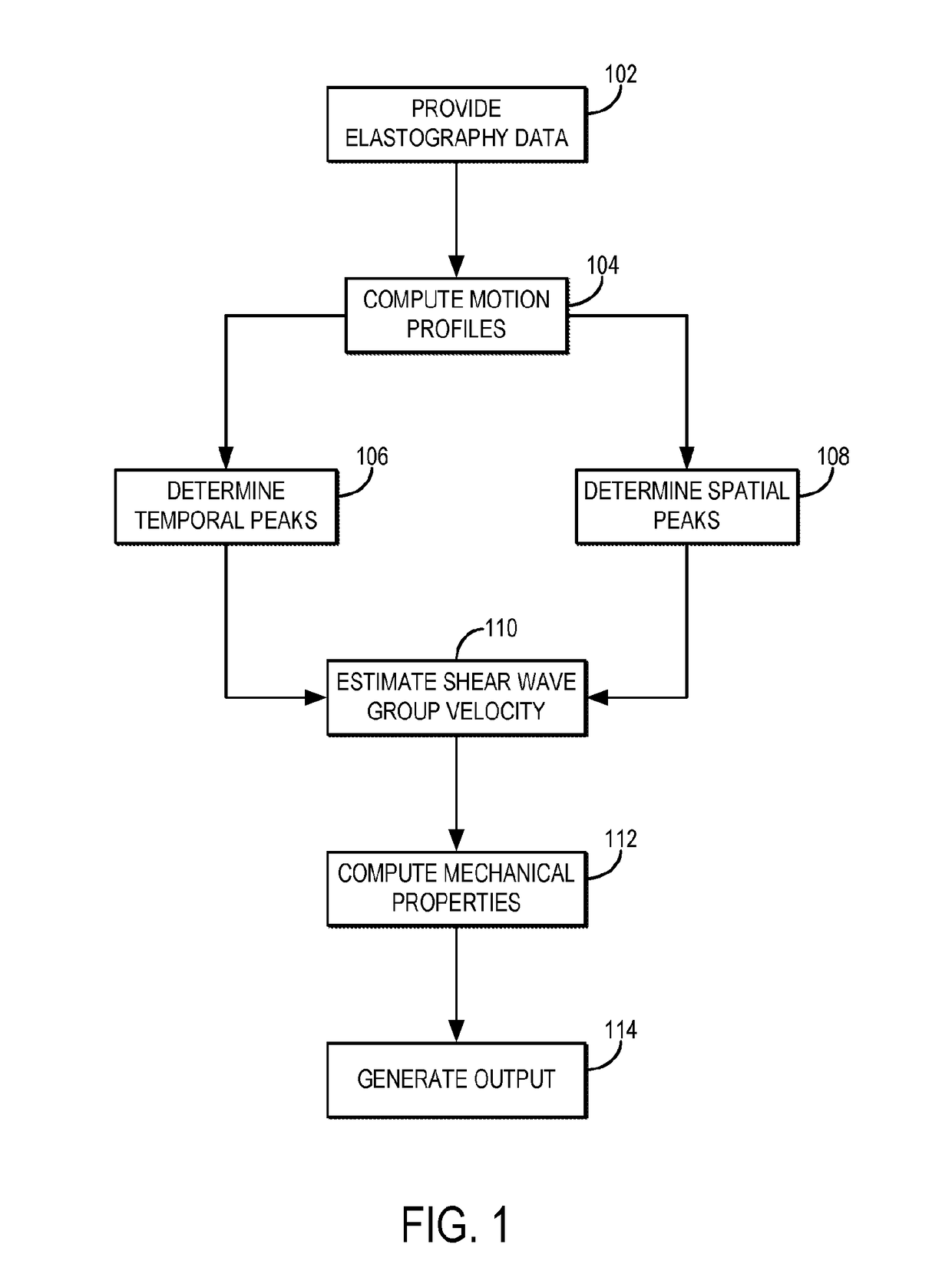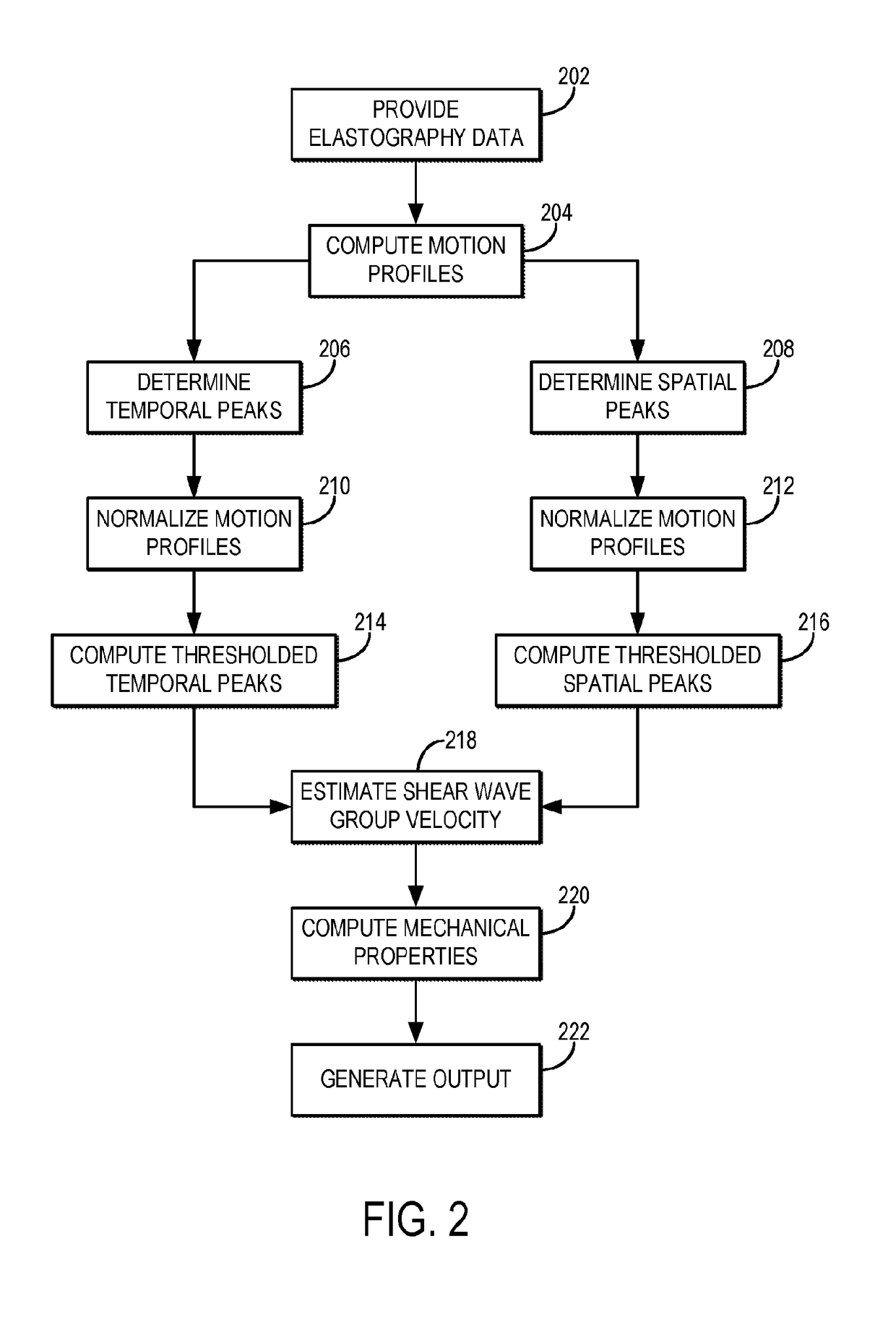Shear wave group velocity estimation using spatiotemporal peaks and amplitude thresholding
a technology of spatiotemporal peak and velocity estimation, applied in the field of systems and methods for estimating shear wave group velocity, can solve the problem of both methods being limited in ultrasound
- Summary
- Abstract
- Description
- Claims
- Application Information
AI Technical Summary
Benefits of technology
Problems solved by technology
Method used
Image
Examples
Embodiment Construction
[0021]Described here are systems and methods for estimating shear wave velocity from data acquired with a shear wave elastography system. More particularly, the systems and methods described here implement a spatiotemporal time-to-peak algorithm that searches for the times at which shear wave motion is at a maximum while also searching for the lateral locations at which shear wave motion is at a maximum. Here, motion can include displacement, velocity, or acceleration. A fitting procedure (e.g., a linear fit) is performed on a combined set of these temporal peaks and spatial peaks to estimate the shear wave velocity, from which mechanical properties can be computed. Conventional time-to-peak algorithms are limited to searching for the maximum shear wave displacement in time profiles at different spatial locations.
[0022]In some embodiments, the temporal and spatial peak data are thresholded to improve the shear wave velocity estimation, as will be described in more detail below. For ...
PUM
 Login to View More
Login to View More Abstract
Description
Claims
Application Information
 Login to View More
Login to View More - R&D
- Intellectual Property
- Life Sciences
- Materials
- Tech Scout
- Unparalleled Data Quality
- Higher Quality Content
- 60% Fewer Hallucinations
Browse by: Latest US Patents, China's latest patents, Technical Efficacy Thesaurus, Application Domain, Technology Topic, Popular Technical Reports.
© 2025 PatSnap. All rights reserved.Legal|Privacy policy|Modern Slavery Act Transparency Statement|Sitemap|About US| Contact US: help@patsnap.com



